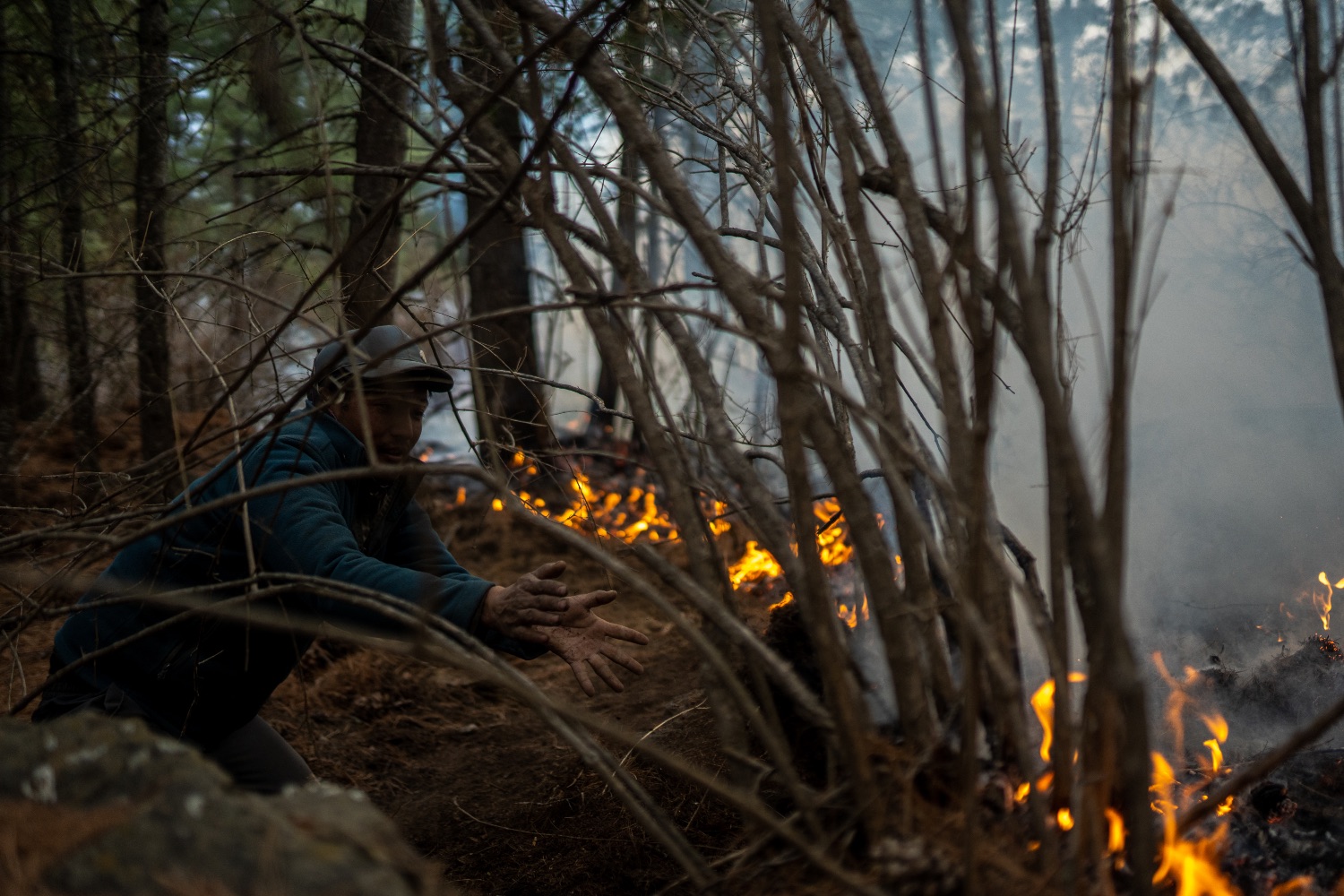Community reduces wildfire risk, increases wellbeing
Tarai women protect their forest from fires by turning dry litter into fertiliser to improve harvestsWith forests covering 43% of the country’s territory, Nepal’s dry season from February to June sees multiple wildfire emergencies that consume human lives, destroy ecosystems, displace wildlife, and wipe out homes and crops.
To be sure, not all wildfires are to be feared. They are a regular natural phenomenon on every continent of the world except Antarctica. They can even help regenerate ecosystems.
What we see today, however, is more humans living closer to forests than in the past and increasing the chance that a fire might break out through negligence, accidents and land clearance.
There is also more potential fuel on forest floors – dead wood and undergrowth, caused by more protracted and frequent heatwaves and droughts that dry out forests.
Together, it makes for a deadly combination. Indeed, in the dry season, the forests of Nepal are covered in thick carpets of dry leaves and branches ready to turn into tinderboxes. A single mishap can ignite a catastrophe.

Putting out wildfires once they break out is costly and time-consuming. A far more effective solution is prevention, which can even offer added financial benefits.
In the municipality of Binayi Triveni, Nawalpur district, in the southwest of the country, a remarkable group of 20 local women has been showing what innovation and tenacity can achieve. They saw an opportunity in mobilising and collecting the forest litter, which consists of fallen leaves, bark, and sticks, all in accordance with technical guidance and monitoring to ensure no harm to the ecosystem. The collected materials are in turn transformed into organic compost.
This business currently produces 60,000 kilograms of nutrient-rich bio-fertiliser each year and employs 400 people from the community. Local farmers using this natural fertiliser report more productive harvests, and government-run nurseries buy the compost to support reforestation projects.
The initiative also contributed to a 70 percent reduction in the municipality’s forest fires last year.

As the Binayi Community Forest User Group, the women do not simply demonstrate their desire to upskill and connect to the forest landscape. They have gained financial independence and elevated their status within their homes and communities. They are now decision-makers, entrepreneurs, and role models. Far from just an isolated success story, this is a solution that addresses multiple urgent global challenges: climate change, wildfire, soil degradation, food insecurity and gender inequality.
Next week on 5 June is World Environment Day, and with only five years to go to achieve the 2030 Global Development Goals and global climate targets, it is imperative that the potential of local communities be harnessed to help solve global challenges.
Grassroots operations are often the first to identify and address pressing local issues, develop context-specific solutions, and foster community engagement and education. Policies and strategies must be put in place to engage local communities and encourage and enable them to be creative.

And when effective solutions emerge, like the example in Binayi Triveni, they should be celebrated, rapidly replicated and scaled up.
It means mustering financial, technical, and political support to support such transformative ideas and approaches that local communities, which can belong to some of the world’s poorest groups, bring to the table.
The Forest and Farm Facility – a partnership between the Food and Agriculture Organization of the United Nations (FAO), the International Institute for Environment and Development, the International Union for Conservation of Nature and AgriCord – and its Nepali partner FECOFUN assisted the women of the Biyani Community Forest User Group in developing a business plan, conducting market analysis, and receiving funding to scale up operations. An additional 50% subsidy from the local government helped them purchase machinery and improve infrastructure.
Today, groups from nearby regions are visiting Binayi Triveni to learn about its achievement so that the initiative and plans can be replicated in more than 40 community forests next year. And governments, community organisations and international organisations like ours must work together to share the best emerging practices and adapt them to different settings so that the benefits can reach beyond one district, one region and one country.
Binayi Triveni is a shining example of what action is possible in the age of climate change. By supporting and scaling up such community-driven models, governments and development partners can combat natural disasters and simultaneously foster a new, sustainable kind of economic growth.
Ken Shimizu is Country Representative for Nepal of the Food and Agriculture Organisation (FAO) of the United Nations.




